You’ve carefully selected your keywords, incorporated them into your site and content strategically and you have some good links pointing at your site… But Google just isn’t ranking your site near the top. What’s the problem?
Search engines and Google in particular are not as dependent on technical signals as they once were.
More business websites than ever have been optimized to some degree for search rankings, so how does G decide which ones to rank on the first page?
The short answer is G looks at user behavior signals to see which web page brings the most satisfaction from the users of a particular keyword.
Perhaps you’ve heard this before… that basic SEO is table stakes just to get in the consideration set for what gets on the first page of Google.
The way people search and engage with business web properties when they are in the hunt for a solution is worth investigating.
After a prospect has done enough research and is ready to make a purchase decision, they have a typical behavior pattern. Consider if this is close to your own experience when making a purchase decision online.
Interaction like this can make a difference in your site’s ranking:
- The title is on topic and makes people want to see more
- The description is enticing with a reason why people like this content
- Appropriate rich snippets are in place so Google can display it
- The page loads quickly
- Prospect is impressed by the look and feel of the site within the first 2 seconds
- It’s clear that they are in the right place (if not on the most relevant page, it’s easy to find what they want)
- Their search intent is satisfied with no reason to go back to the search results page to look further
- Finally the prospect makes contact and/or buys
If your listing or landing page misses the mark in any of these areas, it’s possible that G will lower your ranking due to a user experience mismatch for that keyword.
Are your organic search listings engaging enough to be clicked?
Depending on the expectation of the searcher, you can improve the click through rate (CTR) with action words and identifiers in the title and description tag.
You may be able to identify search listings with a poor CTR by looking at the keywords with high impressions and low CTR, bonus for targeting those listings that are just off the first page of results as well.
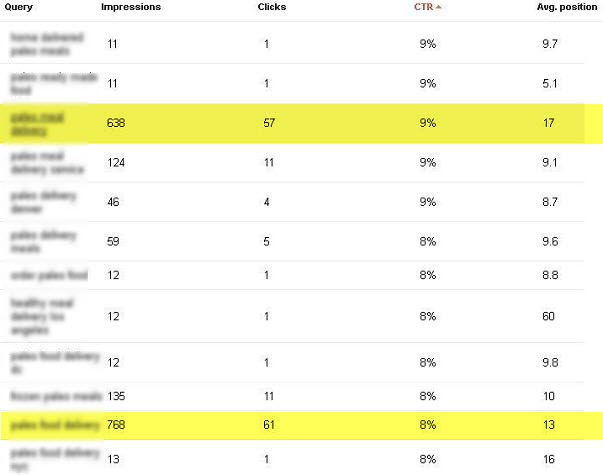
Is your landing page engaging enough to prevent searchers from jumping back to the search results page for something better?
Evaluating your landing page bounce rates is only the beginning to identify a potential problem. I also look at pages per session and average session duration. Landing pages with poor engagement are highlighted:
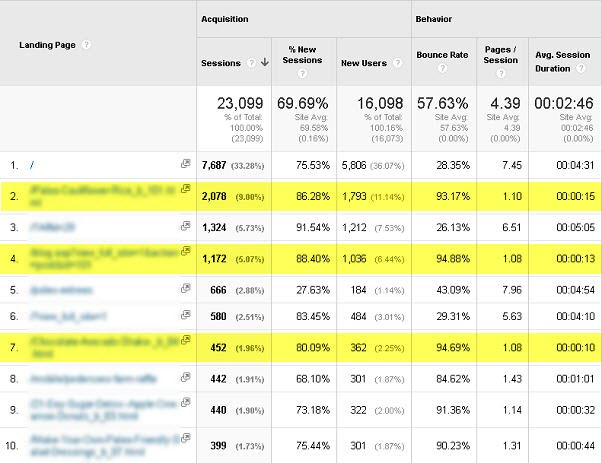
I also look at the same stats from each traffic source to that landing page in the drill down. I’ve highlighted the Google organic traffic to this landing page and the engagement is very good:
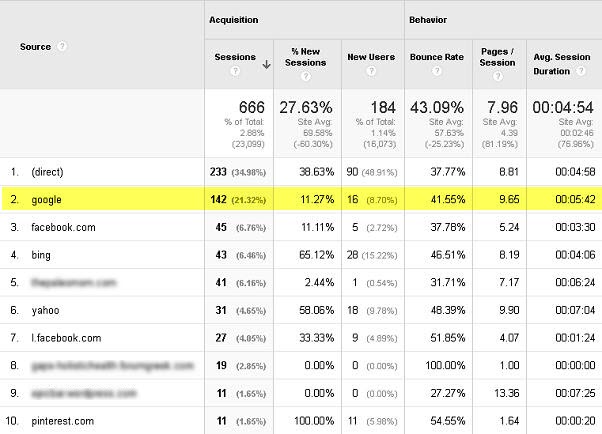
Does your SEO strategy produce results or is it time to change?
As I’ve said before, the bottom line for any traffic source is whether it is producing results or not. Obviously this is just as much about conversion optimization as it is SEO and I believe that conversion is a big element of SEO. Here’s one real quick way to measure success from an ecommerce site (one month reporting):
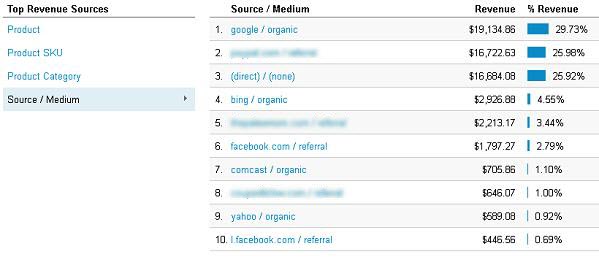
Here’s a similar report for a lead generation site for one quarter and displaying merely one of many defined goals for that period:
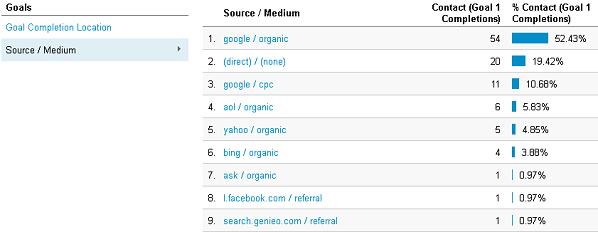
I utilize much deeper reporting on a monthly and quarterly basis than this to pinpoint the various parts of the SEO strategy that are gaining or losing ground. Accurate and detailed reporting is the first step to making improvements.
Perhaps you are seeing that there is more to SEO than keywords and content. The real issue is knowing your ideal prospect well enough to engage them:
- Target the keywords of the ideal prospect at the moment they desire your solution
- Provide content that aligns with the expectation of the ideal prospect without giving away the solution
- Create offers that are difficult to resist
- Measure responses from top of funnel to lead capture and plug up the leaks by testing different content and offers
Consider changing your SEO strategy and learn about the SEO/conversion maintenance plan to identify easy to fix opportunities that have the highest probability of impacting the bottom line on a small biz budget.
3 replies to "Search Behavior Signals That Impact SEO & Conversion"
Hey man,
This is a great article! I totally got to agree that using Google Analytics to check on the stats and doing the needed tweaks to get the ‘job’ done.
Sometime it really puzzles me especially when people are NOT using GA that much.
Thanks for sharing and keep up the good job!
Thanks Reginald.
The behavior pattern you provided is spot on. That can easily be used as a checklist for new site/pages.